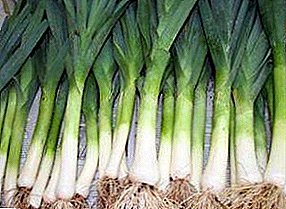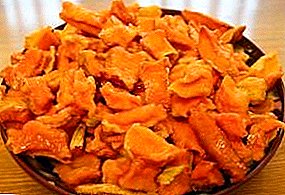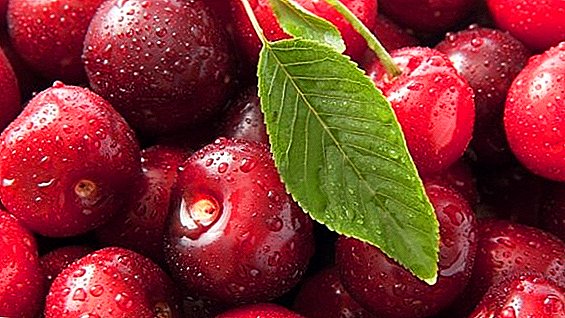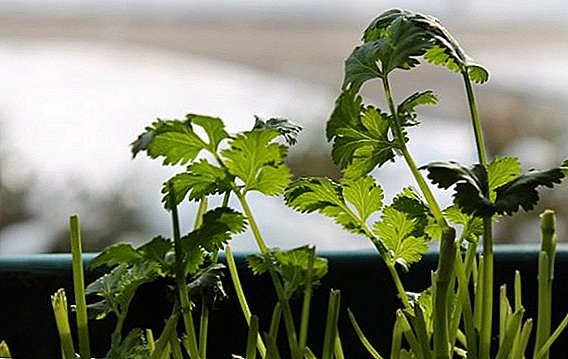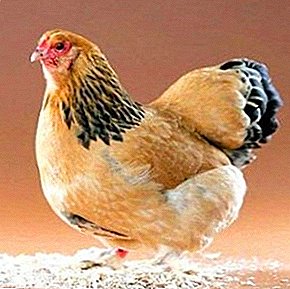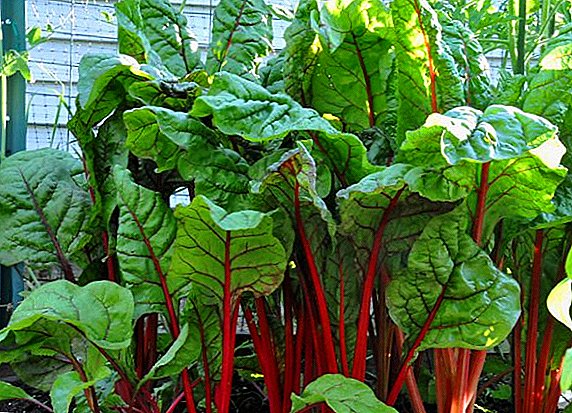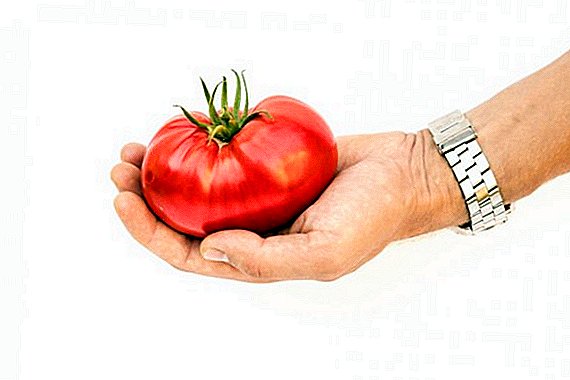 Tomato is one of the most popular vegetables in our kitchen, it can be found in many dishes, especially in the summer season. Summer residents try to pick up the most fruitful and tasty varieties when growing. Today we will discuss the tomato Pride of the feast, learn the subtleties of its cultivation.
Tomato is one of the most popular vegetables in our kitchen, it can be found in many dishes, especially in the summer season. Summer residents try to pick up the most fruitful and tasty varieties when growing. Today we will discuss the tomato Pride of the feast, learn the subtleties of its cultivation.
Variety description
Early ripe hybrid, growing to almost 2 m in height. Fruits are formed on the hands of 3-5 pieces. The variety is characterized by strong immunity to many characteristic diseases of tomatoes. 
Among other advantages:
- uniform ripening;
- large size;
- fleshy and juicy fruit;
- transportability;
- good storage.
Fruit characteristics and yield
Fruit ripening begins 90-100 days after planting. The fruits are large, from 300 to 600 g in weight, round in shape with some ribbing, rich red-pink color. Despite the large number of cameras with seeds, there are no voids in the pulp. The flesh is thick and juicy, with a classic taste. From 1 square. m planting can be collected about 17 kg of crop.
Did you know? The largest tomato was grown by a farmer from the US state of Wisconsin, the fruit weighed almost 3 kg.
Selection of seedlings
Signs of a good seedling:
- strong central stem;
- several branches;
- leaf color is bright green, leaves feel dense;
- wet, branched root system;
- seedlings without ovaries.

Growing conditions
Tomatoes love good light and neutral acidity of the soil. Groundwater should be at a depth of at least 1 m from the surface. In the fall, the planting area is dug up with the introduction of humus, the same procedure is carried out 2-3 weeks before planting in the spring, adding dolomite flour. Landing is usually carried out when there is no threat of return frost.
Important! It is necessary to choose the right predecessors for tomatoes. It is undesirable to plant a vegetable after other nightshade: this will increase the risk of diseases uniting the genus.
Seed preparation and planting
Seeds are soaked for 15 minutes in water: soothers will float, they are removed. Good material is disinfected in a solution of potassium permanganate for about 2-3 hours. The procedure hardens the seeds against bacterial and viral infections. Plant seeds in a wet substrate: garden soil, river sand and humus in a ratio of 2: 1: 1. Put on a depth of 1.5 cm, then covered with a film and placed in a warm and bright place.  Since landing time is in February, artificial lighting will be needed. The lamp should not be placed too close. Water the seedlings need as the topsoil dries. When two strong leaves appear, the seedlings swoop into separate pots. In a week, they feed the root with a mineral complex, for example, potassium monophosphate.
Since landing time is in February, artificial lighting will be needed. The lamp should not be placed too close. Water the seedlings need as the topsoil dries. When two strong leaves appear, the seedlings swoop into separate pots. In a week, they feed the root with a mineral complex, for example, potassium monophosphate.
Important! Two weeks before transplantation, the plants are hardened, bringing to fresh air, gradually increasing their exposure to air.
Maintenance and care
The variety is distinguished by good growth and branching, therefore it stepsons, forming two stalks. So that the heavy fruits, ripening, do not break the stems by their weight, establish a support and tie up the bushes. The garter is made under the fruiting brush, trying not to let the fruit touch the ground. 
Watering is carried out in the evening, the water for him take the separated and warm. Watering is desirable at the root, twice a week. After moisture is absorbed, the soil needs to be loosened, weed from weeds.
Fertilizing with organic matter can be avoided if humus or manure was introduced into the soil in the spring. Fertilize plants during flowering and fruiting with potassium-phosphorus complexes for tomatoes.
To hybrid varieties of tomatoes also include: "Kate", "Semko-Sinbad", "Slot f1", "Irina f1", "Red Guard F1", "Blagovest", "Lyubasha", "Verlioka", "Bokele F1", "Spassky Tower F1", "Summer Garden", "Torbay F1", "Red Red", "Pink Paradise", "Pink Unicum", "Openwork F1", "Petrusha-gardener", "Pink Bush", "Monomakh's Hat "," Big Mommy "," Explosion "," Crimson Miracle "and" Doll Masha F1 ".
Disease and pest prevention
Twice the plants are treated for phytophtoras, the drug Ordan has proven itself well. Spraying is carried out during flowering and fruit formation. During fruiting from top rot, seedlings can be sprayed with a solution of calcium nitrate. In case of illness, use the biological product "Trichodermin". 
Among the popular methods of preventing the occurrence of phytophtora include the following:
- infusion of garlic;
- infusion of celandine;
- baking soda solution.
Did you know? At a time when tomatoes were considered not only inedible, moreover, poisonous, they tried to poison George Washington with this very vegetable. The attempt was not crowned with success, of course, and the story entered the textbooks like an anecdote.
Harvesting and storage
Harvest in the stage of technical maturity, leaving the stalk, if they are going to be stored for a long time. Tomatoes are sent to storage in the cellar or basement, where it is dry and cool. Vegetables can be shifted with wax paper and folded in wooden boxes. To put tomatoes in storage is not necessary before storage. It is necessary to make sure that there are no crackles or browning on the fruit, the rest of them may start to rot from one vegetable.
Finally: This variety is not suitable for canning, it is considered a salad and consumed fresh. It will perfectly complement the first or second course, vegetable salad or casserole.


